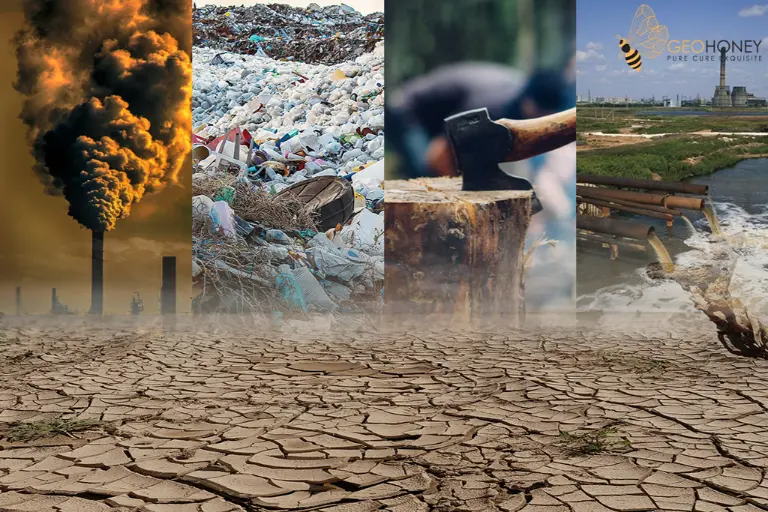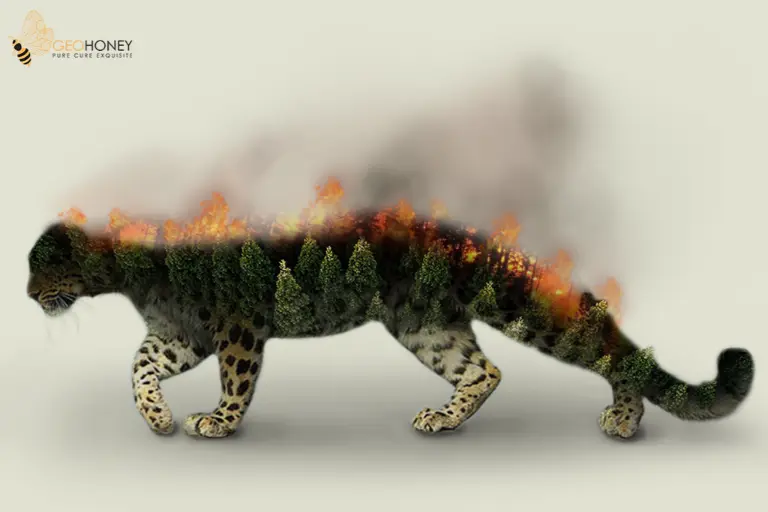- Tokyo: 20:05
- Singapore: 19:05
- Dubai: 15:05
- London: 11:05
- New York: 06:05
The Unappreciated Advantages of Wild Bees

Rachael Winfree, an ecologist, discovered a species of plasterer bee in the New Jersey Pine Barrens that had not been seen in 50 years and was thought to be extinct when she first started studying bees 25 years ago. When she contacted state wildlife officials to report her discovery, she was told that they were uninterested since they lacked the capacity to monitor bees and other insects.
Scientists that research native bees are familiar with this circumstance. These insects are under attack from a variety of sources, and while official monitoring has improved, their decreases have not been extensively documented. Simultaneously, a rising corpus of studies demonstrates how important native bees are as pollinators for many plants. "They both pollinate our natural systems and, what many people don't realise, they are also vital to many of our agricultural crops," says Scott Black, executive director of the Xerces Society, a nonprofit dedicated to invertebrate conservation.
Domestic honeybees are almost synonymous with pollination in the public's imagination, particularly when it comes to agriculture, and the predicament of wild bees has been largely eclipsed by concern over domestic bee dangers. According to Hollis Woodard, an entomologist at the University of California, Riverside, many people don't realise the difference between wild and farmed bees, which obscures both the problems and the worth of many wild species.
Individual domestic honeybee colonies are at risk of collapse due to a combination of poor diet, pesticides, and infections, yet the insects are not in danger of extinction. "We manage honeybees all over the world," explains Black. "We believe there are more honeybees on the planet now than ever before."
However, for certain wild bees, the risks may be life-threatening. And this isn't only terrible news for bees. Researchers suggest that depending entirely on honeybees for pollination is a dangerous strategy equivalent to buying investments in only one business for retirement. Furthermore, studies have shown that native bees are often critical to the health of ecosystems and agriculture, even in areas where honeybees are prevalent.
As public awareness of the problem grows, scientists and policymakers are paying closer attention to the reductions of these vital insects. Furthermore, new data suggest that farmers and land managers can better promote a diversified and thriving bee colony.
Benefits of Bees
Unlike hive-forming honeybees, most wild species are solitary (with the exception of bumblebees, which form colonies), nesting in cavities in rocks and wood or on the ground in leaves and woody debris. There are over 20,000 wild bee species worldwide, with 3,600 in the United States and Canada.
Insect pollinators are essential for the reproduction of more than 80% of flowering plants. When pollinators visit flowers, which serve as the plants' reproductive organs, to consume their nourishing pollen and nectar, the insects mistakenly carry pollen between plants, fertilising the blooms and resulting in fruit and seed production. "If you want resilient meadows in Colorado's mountains, beautiful tall grass prairie in the east, or flowering ecosystems in California, you can thank a native bee," explains Black.
Native bees pollinate three-quarters of crop species that rely on pollinators in agricultural fields around the world, accounting for one-third of worldwide crop production by volume. (Many staples, such as wheat and maize, are pollinated by the wind.) Researchers discovered that natural insects increased the rate at which blooms turned to fruit in a 2013 study that covered 27 types of crops, including almonds, coffee, and blueberries, spanning 600 farms around the world. Fields with fewer natural pollinators produced less fruit, prompting the authors to infer that honeybee pollination may not be sufficient to sustain optimal farm output.
Recent research has also revealed the enormous economic impact of wild bees. According to 2020 research, wild bees are responsible for about $1.5 billion in annual production for seven crops, including apples and pumpkins. According to a 2015 study of 20 crops across nearly 1,400 acres, wild and managed bees contribute similarly to the value of fruit sold.
Wild bees are more effective pollinators than honeybees for some crops. Bumblebees, for example, are extremely important in tomatoes, blueberries, and cranberries. To release pollen, the flowers of these crops must be shaken at a specific frequency. "That frequency is provided by the bees' buzz," says University of Illinois Urbana-Champaign entomologist Sydney Cameron, writer of a 2020 assessment of trends in bumblebee health in the Annual Review of Entomology. The fuzzy insects land on flowers and disconnect their flight muscles from their wings, allowing the muscles to vibrate their thorax while their wings remain stationary, making them the most effective pollinators for these plants.
However, all of the advantages supplied by native bees may be jeopardised, according to Claire Kremen, a conservation biologist at the University of British Columbia. In a study of nearly half of all bumblebee species, scientists estimated that one-third were in decline. The number of bee species documented in a yearly survey from 2006 to 2015 decreased by one-fourth when compared to comparable tallies prior to 1990. Some crops, such as apples, blueberries, and cherries in the United States, are already bearing the brunt of the losses, producing less fruit than would be expected with more pollinators.
Stemming the Losses
The causes of native bee decrease are various. According to Black, the biggest challenges are habitat loss, sickness, and pesticides, with climate change and exotic plant growth also adding strain. Managed honeybees and bumblebees can wreak havoc on wild animals by spreading disease and fighting for food.
However, Kremen believes that we should not abandon managed bees. She recommends steps that benefit all pollinators. "We've also found that in specific crop studies, the combination of honeybees and wild bees can be more effective," she explains. "In general, it's a good strategy to have both."
Source: science.thewire.in




Wild bees and other insects have a crucial role to play in the pollination of both wild plants and crop plants. The food we need, to survive is pollinated by bees.